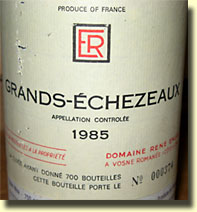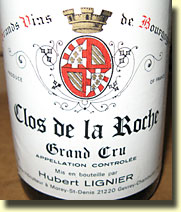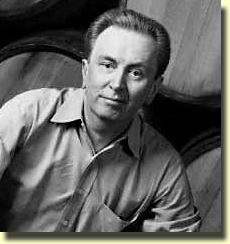|

|




Part II and
Part III

The week started off
with a bang on Easter Sunday; not normally a holiday I particularly take
note of, or celebrate. Usually I just have a quiet dinner at home, no
different from any other evening meal. Yet several weeks earlier, at my
wife’s urging, we had arranged to get together for dinner with
Al Stewart (right). While
perhaps not a household name today, you may remember the name if you
were listening to pop or folk music in the 1970’s. Al had a few pretty
sizable hits back then, beginning with “Year of the Cat”, to be
followed by “Time Passages” and a few others as well. He still
records and performs, and in fact will embark on a tour of England later
this month. I had met Al at a dinner with one of my wine groups, the
X-pensive Winos. An L.A. resident, Al is not a member of the group,
but he had been invited by one of our members who is a former Capitol
Records executive. Turns out that Al is quite an oenophile and
experienced wine geek. He even titled one of his albums “Down in the
Cellar”. While his contemporaries in the music world were smoking,
snorting or shooting their brains out, Al was getting high the
old-fashioned way, by drinking First Growth Claret, Grand Cru Burgundy,
and the best wines he could find from France and elsewhere. Affording
the best was certainly no problem in his pop-star heyday, and he has
drunk wines most of us can only dream of. Beyond that, however, he’s a
really down-to-earth, unassuming guy with a great sense of humor,
intelligence, and a genuine enthusiasm for the fine art of eating and
drinking.
Anyway, my wife Linda and Al had hit it off at a Winos dinner
last December, so we decided to arrange to meet for dinner at a West
L.A. restaurant, Josie, to enjoy some good conversation, and even
better Burgundies. Al said he’d bring some whites; I was to bring the
reds. The results were memorable.
|
|
When we arrived, it turned out Al had brought only one white, and a red
wine. I said “only” one white, but what a white it was: 2002
Chevalier Montrachet, Domaine Leflaive. OK, that’s getting things
off the ground in a hurry. Rich yellow color; the nose is rich, ripe,
exotic, but very fresh and without a hint of any premature oxidation
that has plagued too many great white Burgundies in recent years (but
not Domaine Leflaive, apparently). What’s amazing about great white
Burgundy is how they can combine great richness and depth on the one
hand, with the impression of lightness and delicacy on the other.
Although quite young and still a bit restrained when first poured cold,
the wine has great complexity with hints of lemon, grilled bread, some
tropical spice and cream. Warming brought out additional nuances, and
everything was in perfect balance. Only with additional bottle age does
white Burgundy get any better than this. Find this wine
 The three red wines were poured oldest to youngest. First up was my two
contributions, the 1985 Grand Echezeaux, Domaine Rene Engel,
followed by the 1988 Clos de la Roche, Hubert Lignier. The 1985
vintage was much praised when it was released, and the wines were
immediately delicious, but some thought them to be not particularly
ageworthy. And in fact many 1985’s are getting a bit tired today, but
not this Grand Echezeaux, which seems to be at a perfect peak of
maturity. This is what I love about older Burgundies—a wonderful,
fulsome fragrance of great complexity, a silky texture that glides
across the palate, and a lingering finish. This is not about fruit,
power, richness, or impact. No, it’s about grace, elegance, and
something hidden, revealing itself slowly, just a bit with each sip. At
first, this seemed overpowered by the Clos de la Roche that followed it,
but gradually the depth of the wine revealed itself as the fragrance
seemed to fill the table. Only 700 bottles (about 2 barrels) of this
wine were made, and I wish I had them all! Find this wine The three red wines were poured oldest to youngest. First up was my two
contributions, the 1985 Grand Echezeaux, Domaine Rene Engel,
followed by the 1988 Clos de la Roche, Hubert Lignier. The 1985
vintage was much praised when it was released, and the wines were
immediately delicious, but some thought them to be not particularly
ageworthy. And in fact many 1985’s are getting a bit tired today, but
not this Grand Echezeaux, which seems to be at a perfect peak of
maturity. This is what I love about older Burgundies—a wonderful,
fulsome fragrance of great complexity, a silky texture that glides
across the palate, and a lingering finish. This is not about fruit,
power, richness, or impact. No, it’s about grace, elegance, and
something hidden, revealing itself slowly, just a bit with each sip. At
first, this seemed overpowered by the Clos de la Roche that followed it,
but gradually the depth of the wine revealed itself as the fragrance
seemed to fill the table. Only 700 bottles (about 2 barrels) of this
wine were made, and I wish I had them all! Find this wine
 As
for the Clos de la Roche, it’s a much more impactful wine, richer and
with deeper color and body. Showing a bit of the abundant tannins for
which the vintage is known, this is now almost mature and is close to
being a great wine, but not quite yet. Showing darker fruit flavors and
more richness than the Engel, this is more immediately appealing but
didn’t develop in the glass to the same extent. Nevertheless, it’ shows
all the class, complexity and staying power one expects of a Grand Cru
from a top producer. Another 3 to 5 years should bring this to full
maturity, when I expect it to be absolutely magnificent. Find this wine As
for the Clos de la Roche, it’s a much more impactful wine, richer and
with deeper color and body. Showing a bit of the abundant tannins for
which the vintage is known, this is now almost mature and is close to
being a great wine, but not quite yet. Showing darker fruit flavors and
more richness than the Engel, this is more immediately appealing but
didn’t develop in the glass to the same extent. Nevertheless, it’ shows
all the class, complexity and staying power one expects of a Grand Cru
from a top producer. Another 3 to 5 years should bring this to full
maturity, when I expect it to be absolutely magnificent. Find this wine
Al’s final contribution was quite a change of pace, the 1999
Chambolle Musigny “Les Amoureuses”, Robert Groffier. Among hard-core
traditionalist Burg-o-philes (isn’t that most of them?), Groffier
sometimes gets kind of a bad rap, a “damning with faint praise” for his
ripe, full-bodied style. Some dismiss them as too fruit-forward, too
easy, and the worst insult of all, too “California pinot-like”. Well, I
think most California pinot producers would be thrilled to make a wine
like this. Yes, it has plenty of fruit, but of course it’s only a 1999,
so one would expect more primary fruit than wines 10 years older. But
the fruit is primarily red, not black, and the impeccable balance of
great Burgundy is unmistakable. There’s that wonderful wild strawberry
elegance that typifies Chambolle, a delicacy that’s discernable even in
the presence of plenty of rich fruit. Al thinks the Groffier wines are
best drunk on the young to medium-aged side, say 8-15 years from the
vintage, but based on this 10-year-old example, I see no reason why this
wine won’t be delicious in another 10 or 15 years from now, as the
balance for extended aging is clearly there. Great stuff. Find this wine
That was a helluva collection of wines for one meal, but Al wasn’t done
yet, and he invited us back to his place to cap off the evening. A few
Rhoney possibilities were bandied about, but ultimately we selected a
1998 Domaine de la Mordoree, Chateauneuf du Pape Cuvée de la Reine des
Bois. I’ve heard much about this estate and its wines, but can’t
recall ever tasting one. Although some 1998’s are approaching maturity,
this one seemed very primary and young with little development. After
the Burgundies, this seemed huge and a bit soft and oafish by
comparison, but I think it’s just too young and undeveloped to show much
of the spice I like in CdP. Very rich, ripe, deep, and packed with
fruit, there’s a bit of new oak in there as well, but not too much, and
the tannins are smooth enough for the wine to be enjoyed now, although
undoubtedly it would show better with grilled meats or cheese than drunk
on its own as we were doing. I’d give this wine several more cellar
years. Find this wine
At this point we needed a palate cleanser, and after learning that
Linda’s taste in whites veers toward crisp, high-acid wines, Al opened
one out of our sight and asked us to guess what it was. One sniff and it
was immediately clear that the wine was a German Riesling, fairly young
and very fresh, with just a hint of sulfur under the surface. Very
crisp, with superb delineation and cut, and noticeable but not a high
level of sweetness, I first guessed a Fritz Haag Spatlese. Al
said I was close, so I said “well, in that case it must be J.J. Prum,
probably Wehlener Sonnenuhr.” Bingo! Except that it was an
Auslese, 2005. Remarkably refreshing after so many reds, the
perception of sweetness was much less than I would expect of an Auslese,
probably because of the very high acidity and young age. This is just a
baby, but is drinking very well, a delicious infanticide, and a great
way to end the evening. Find this wine
Part II and
Part III
Bennett Traub
Reporting From The Left Coast
Send Bennett an
|



|



 The three red wines were poured oldest to youngest. First up was my two
contributions, the 1985 Grand Echezeaux, Domaine Rene Engel,
followed by the 1988 Clos de la Roche, Hubert Lignier. The 1985
vintage was much praised when it was released, and the wines were
immediately delicious, but some thought them to be not particularly
ageworthy. And in fact many 1985’s are getting a bit tired today, but
not this Grand Echezeaux, which seems to be at a perfect peak of
maturity. This is what I love about older Burgundies—a wonderful,
fulsome fragrance of great complexity, a silky texture that glides
across the palate, and a lingering finish. This is not about fruit,
power, richness, or impact. No, it’s about grace, elegance, and
something hidden, revealing itself slowly, just a bit with each sip. At
first, this seemed overpowered by the Clos de la Roche that followed it,
but gradually the depth of the wine revealed itself as the fragrance
seemed to fill the table. Only 700 bottles (about 2 barrels) of this
wine were made, and I wish I had them all!
The three red wines were poured oldest to youngest. First up was my two
contributions, the 1985 Grand Echezeaux, Domaine Rene Engel,
followed by the 1988 Clos de la Roche, Hubert Lignier. The 1985
vintage was much praised when it was released, and the wines were
immediately delicious, but some thought them to be not particularly
ageworthy. And in fact many 1985’s are getting a bit tired today, but
not this Grand Echezeaux, which seems to be at a perfect peak of
maturity. This is what I love about older Burgundies—a wonderful,
fulsome fragrance of great complexity, a silky texture that glides
across the palate, and a lingering finish. This is not about fruit,
power, richness, or impact. No, it’s about grace, elegance, and
something hidden, revealing itself slowly, just a bit with each sip. At
first, this seemed overpowered by the Clos de la Roche that followed it,
but gradually the depth of the wine revealed itself as the fragrance
seemed to fill the table. Only 700 bottles (about 2 barrels) of this
wine were made, and I wish I had them all!  As
for the Clos de la Roche, it’s a much more impactful wine, richer and
with deeper color and body. Showing a bit of the abundant tannins for
which the vintage is known, this is now almost mature and is close to
being a great wine, but not quite yet. Showing darker fruit flavors and
more richness than the Engel, this is more immediately appealing but
didn’t develop in the glass to the same extent. Nevertheless, it’ shows
all the class, complexity and staying power one expects of a Grand Cru
from a top producer. Another 3 to 5 years should bring this to full
maturity, when I expect it to be absolutely magnificent.
As
for the Clos de la Roche, it’s a much more impactful wine, richer and
with deeper color and body. Showing a bit of the abundant tannins for
which the vintage is known, this is now almost mature and is close to
being a great wine, but not quite yet. Showing darker fruit flavors and
more richness than the Engel, this is more immediately appealing but
didn’t develop in the glass to the same extent. Nevertheless, it’ shows
all the class, complexity and staying power one expects of a Grand Cru
from a top producer. Another 3 to 5 years should bring this to full
maturity, when I expect it to be absolutely magnificent.